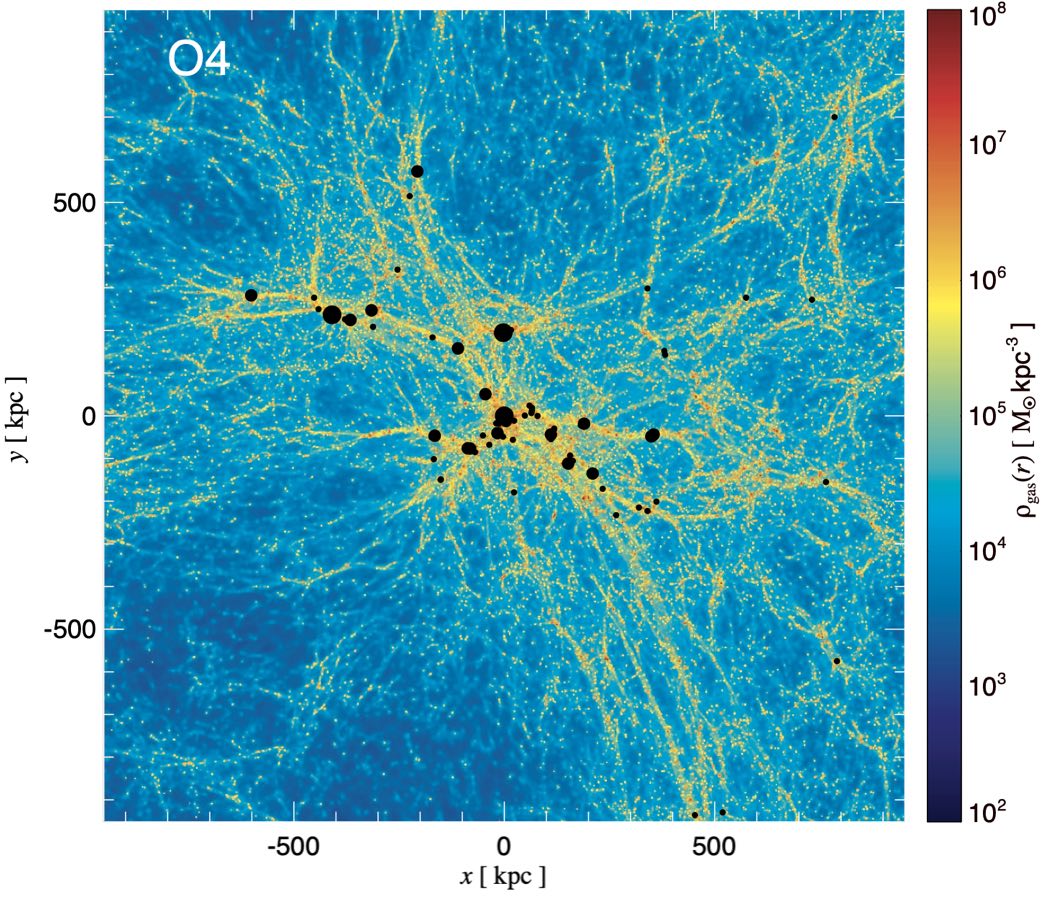ASPIRE JWST (GO 2078)
JWST-ASPIRE is a 65-hour JWST Cycle one program targeting 25 quasars at z>6.5.
ASPIRE is a JWST quasar legacy survey which will target a sample of 25 quasars at redshift between 6.5 and 6.8. ASPIRE will enable a powerful spectroscopic (WFSS mode) and imaging survey along the entire quasar light cones, resulting in the detection of Halpha lines of several hundreds galaxies at 3.8 < z < 5.1, Hbeta+[OIII] lines of about five hundreds galaxies at 5.3 < z < 7 over 280 arcmin2 sky area, including one hundred galaxies physically associated to the central quasars. The coordinated NIRISS parallel imaging covering ~120 arcmin2 will allow us to identify additional galaxies at z~6.5-6.8 and to probe quasar-galaxy clustering at larger scales. Our main goals are to uncover key properties of the quasars and their host galaxies, as well as the galaxies residing in their larger-scale environment.
Since our program probes the largest cosmic volume out of any of the JWST Cycle 1 NIRCam/WFSS programs, we have the unique opportunity to explore many other science goals at both lower and higher redshifts. Below we highlight some key physical questions our team is working on answering.
The dark matter halo and the environment of reionization-era quasars

The clustering of a population can be directly related to their host dark matter halo masses, but the low space density of quasars in the epoch of reionization (EoR) prevents the auto-correlation measurement. While we have operated under the assumption that the most luminous reionization-ear quasars reside in the most massive dark matter halos, we have not constrained this observationally. With a large sample of > 100 [OIII] emitters that we will identify in the fields of 25 reionization-ear quasars, ASPIRE will measure the cross-correlation length of quasars and galaxies in the EoR and constrain the scales of the quasar host dark matter halos.
The Quest to Detect Stellar Emission from Quasar Host Galaxies

Because the light from a luminous quasar can outshine its host galaxy, disentangling the starlight from z > 6 quasars has been nearly impossible before the spatial resolution and sensitivity afforded by JWST. Detections in the rest-UV and optical in F200W and F356W offer stringent constraints on the emission from the quasar host with much deeper observations than achieved previously by HST. Combined with existing observations of the gas and dust revealed by ALMA, we will have a detailed multiwavelength understanding of the host galaxy's ISM and stellar distribution.
Probing the early black hole growth and AGN feedback

Studies of rest–frame optical emission in quasars at z > 6 have historically been limited by the wavelengths accessible by ground-based telescopes. JWST now offers the first opportunity to study the Hβ and [OIII] emission lines of quasars deep into the reionization epoch, which will enable us to measure the mass of the first quasars. Leverage the sensitivity and resolution, JWST will also allow us to characterize the galactic-scale outflows powered by these powerful sources in the early universe.
Constraining Galaxy Ionizing Photon Escape and Cosmic Reionization

Faint galaxies might dominate the process of reionization if their escape fractions of ionizing photons is large, but LyC cannot be directly detected at z>5 as it is increasingly absorbed by the intergalactic medium. However, we can probe this indirectly by cross-correlating foreground galaxies with Lyα and Lyβ transmission spikes in quasar spectra. Excess IGM transmission is expected around bright galaxies, which traces the enhanced ionizing background produced by a faint clustered population, allowing us to constrain the ionizing output of galaxies.